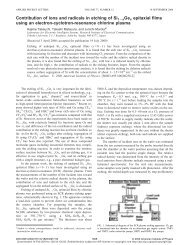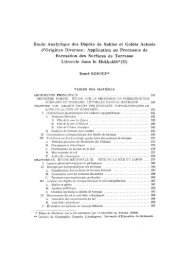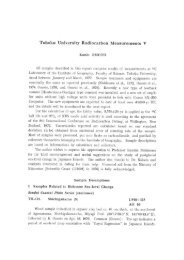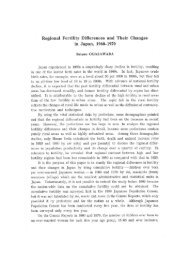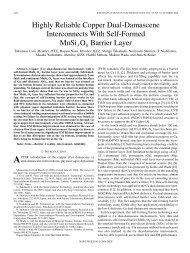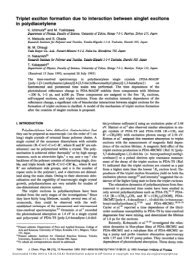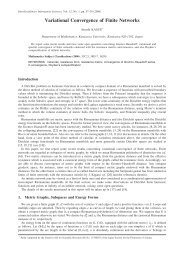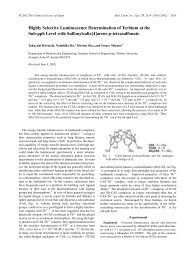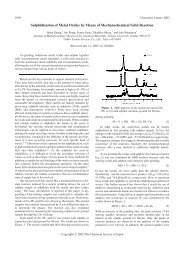MgE71241:1attf:3(t At-- 0 -3 5t5M I:. N1144±TitoD riziMinliJ VAT .9f 1 ...
MgE71241:1attf:3(t At-- 0 -3 5t5M I:. N1144±TitoD riziMinliJ VAT .9f 1 ...
MgE71241:1attf:3(t At-- 0 -3 5t5M I:. N1144±TitoD riziMinliJ VAT .9f 1 ...
You also want an ePaper? Increase the reach of your titles
YUMPU automatically turns print PDFs into web optimized ePapers that Google loves.
2. DEVELOPMENT OF THE FABRY-PEROT DOPPLER IMAGING SYSTEM 27<br />
are taken. Next, X and Y coordinates at the intersections of vertical and horizontal grid<br />
lines in the image are obtained, and the two-dimensional plane-spline-interpolation method<br />
is applied to interpolate the X and Y coordinates over the whole region of the image. Figure<br />
2.7(a) shows an example of the grid image used for the grid calibration, while Figure 2.7(b)<br />
shows an image corrected by the two-dimensional plane-spline-interpolation method. It is<br />
found that distorted and curved grid lines are mapped to straight lines that are orthogonal<br />
to each other.<br />
As described above, the correction procedures for the PIH images are very complicated,<br />
and may reduce the accuracies in derivation of thermospheric winds and temperatures. To<br />
solve this image distortion problem, we need a different type of imaging detector. In the<br />
model developed in 1993, we adopted the proximity focused photon counting imager (PFPCI)<br />
which has no electric lenses. Details about the PFPCI are described in Section 2.4.4.<br />
2.3.3 Problems in the image integration<br />
The PHI was operated in the photon counting mode because the luminosity of auroral<br />
emission is usually less than 106 photons/mm2/s. This mode detects an incident photon as<br />
a single photon spot on the output fluorescent screen. A typical diameter of this spot is<br />
approximately 60 ,um. Images are then produced by summation of individual photons on<br />
the CCD chip. The exposure time of the CCD is selectable among 0.53, 1.06, 2.13, 4.26, and<br />
8.58 s. Then, a thresholding procedure which eliminates CCD thermal and readout noises<br />
and an integration procedure are needed to obtain the etalon fringes of the incident light,<br />
as shown in Figure 2.8(a). However, photon spots sometimes overlap each other as shown<br />
in Figure 2.8(b), since the PHI detects too many photons in the case of bright aurora even<br />
if the minimum exposure time of 0.53 s is selected. In this case, obtained fringe peaks are<br />
deformed because overlapped photon spots are counted as one spot by a simple thresholding<br />
procedure.<br />
To solve this problem, a new image processing system has been adopted for the new<br />
version of the FPDIS developed in 1993. Details about this system are described in Section<br />
2.4.5.






